Two neighbouring sixties council estates in north London. One is the best kept estate in the district. The other is in total disrepair, blighted by crime and, much to residentsŌĆÖ relief, being torn down. To find out what can be learned for the latest wave of high-density inner-city housing developments, Martin Spring plays a game of spot the difference
The sixties are back in fashion again ŌĆō at least when it comes to high-density, inner-city housing developments. But is a return to superdensity a good thing, particularly if, as one well-placed critic put it, planned schemes ŌĆ£look surprisingly like the things we are pulling downŌĆØ?
Two estates in north London from the last wave of high-density council housing can tell us a lot about the successes and failures of high-density living. Despite the fact they are neighbouring estates, the differences are marked.
Islington councilŌĆÖs 40-year-old Market estate (opposite) is a classic case of an estate in terminal decline. Nowhere is this more graphically illustrated than in the case of 12-year-old Christopher Pullen, who died seven years ago after a heavy steel-plated security door collapsed on top of him. Tenants had repeatedly warned the council that the door was unsafe. In the wake of PullenŌĆÖs death they campaigned for total redevelopment, which was accepted by the council in 2002.
In comparison, the Corporation of LondonŌĆÖs York Way estate (above) is in fine fettle. Resident Joyce Corroyer says: ŌĆ£ItŌĆÖs the best kept estate in the district. Everything we say gets done.ŌĆØ
So, how has the Market estate got it so wrong? Is it a case of poor design or just bad management?
Layout: a vision of a pedestrian paradise
Market estate
When completed in 1967, the Market estate was at the cutting edge of inner-city, high-density housing design. It was designed by Farber & Bartholomew, built and managed by the Greater London council and bequeathed to Islington council in 1986. It has 271 flats and maisonettes in eight- and four-storey slab blocks, at a density of 106 dwellings per hectare. These are arranged around two rectangular pedestrian piazzas above basement car parks.
However, the scheme has not lived up to the pedestrian paradise its architect intended. ŌĆ£ItŌĆÖs a magnet for trouble,ŌĆØ says Sharon Jobe, chair of the residents association. Because the slab blocks are physically linked at each corner, boy racers on motor scooters can career around the squares below. For the same reason, vandals and burglars can escape along upstairs corridors with exits at either end. ŌĆ£The police can never catch them,ŌĆØ says Jobe.
York Way estate
Designed by McMorran and Whitby and completed in 1969, York Way estate also comprises slab blocks rising to eight storeys above a pedestrianised ground level, with parking out of sight in the basement. Containing 275 flats and maisonettes at a density of 143 per hectare, the four slab blocks are strung out on an elongated site and look out over extensive landscaped lawns on one side.
The pedestrian routes through the scheme encourage teenage bikers. In the early hours of the morning before ║├╔½Ž╚╔·TVŌĆÖs visit, impromptu biking frolics were noisy enough to wake up many residents.
Within the blocks, long, narrow central corridors are similar to those in the Market estate, though less dilapidated.
Space: ŌĆśbrilliant insideŌĆÖ
All 271 dwellings were built to generous Parker Morris space standards and all came with large windows and an external balcony or terrace. ŌĆ£The homes were brilliant inside,ŌĆØ says Jobe in the same breath that she criticises the external layout and chronic council neglect.
All 275 flats and maisonettes were built to generous Parker Morris space standards with large windows, but without external balconies.
Facilities: space to kick about
No social facilities were built in the estate, although it opens on to the public Caledonian park next door.
In the nineties, Margo Dunn, a local ward councillor, proposed that the council should build a youth centre in the disused basement car park, though this was never developed. Last year, a kickabout area was created within Caledonian Park.
A childrenŌĆÖs nursery pavilion, with its own secluded play area, was built as part of the original development. It is still used extensively by toddlers, teenagers and adults.
In 1998, another well-equipped toddlersŌĆÖ play area and a kickabout area were created on hard deck over the basement car park. They are both fenced off but freely accessible in daylight hours.
Community: the vicious circle
The Market estate is routinely branded ŌĆ£one of IslingtonŌĆÖs most notorious estatesŌĆØ in the local press. Teenagers run amok on motorbikes through the public spaces, terrorising residents and causing ŌĆ£a constant roarŌĆØ, according to local councillor Dunn. They are also blamed for graffiti and smashed windows. An extreme case was the wrecking of a new concierge dwelling just months after it was built at the front of the estate in 1987.
ŌĆ£On New YearŌĆÖs Eve, kids spent all night smashing it up,ŌĆØ Dunn recalls. ŌĆ£They caused a quarter-of-a-million pounds of damage in one night, and the concierge never came back.ŌĆØ
Dunn points the finger at the estateŌĆÖs residents, even though she campaigned for redevelopment on their behalf. ŌĆ£I blame the people living there. They leave rubbish about and furniture in corridors where people live, and then others set fire to them. IŌĆÖve even seen a little child doing its business in a corridor while its mother looked on unconcerned.ŌĆØ
To Mark Collins, development officer at the Southern Housing Group, which took over the estate for redevelopment in 2005 (see box, page 43), the prevalence of graffiti is part of a vicious circle. ŌĆ£As the estate spirals downwards, people show less respect for it.ŌĆØ
The residents association has frequently closed down owing to lack of support.
Collins adds: ŌĆ£There is the problem of a lot of sex workers and drug dealers coming into the estate.
They were displaced from KingŌĆÖs Cross by the regeneration of the area.ŌĆØ
ŌĆ£They get through the security doors and sit in the top-floor corridors,ŌĆØ adds Sarah Thomas, SouthernŌĆÖs estate manager. ŌĆ£It makes things very difficult for residents.ŌĆØ
The fundamental problem of the Market estate was not its architectural design. It was the lack of maintenance and management
Dale Meredith, Southern Housing Group
The 275 households of York Way estate take pride in their estate and the community they belong to. A vibrant residents association has taken over the nursery building. It runs a ŌĆ£Kids ClubŌĆØ every afternoon through the school holidays and on two evenings a week during term-time, as well as laying on exercise classes for adults. It also organises regular social events, such as a Christmas party and summer barbecue. Although the estate has been partly colonised by several extended families of Londoners, the residents association reaches out to newcomers from overseas with a yearly ŌĆ£international dayŌĆØ, to which residents are encouraged to bring and share foods and music from their native lands.
That said, the estate is not without its rowdies. ŌĆ£WeŌĆÖre plagued by kids on motor scooters,ŌĆØ says Cardy. ŌĆ£It gets so noisy sometimes that you canŌĆÖt watch TV.ŌĆØ
The residents themselves join in the task of policing antisocial behaviour. ŌĆ£If kids are doing something they shouldnŌĆÖt, we tell them,ŌĆØ says Brenda Kyriacou, secretary of the residents association. ŌĆ£They know theyŌĆÖre being watched and they grow up with respect for the environment they live in.ŌĆØ
The estate has also had problems with prostitution. ŌĆ£WeŌĆÖve had prostitutes in the refuse bin houses and even come across money changing hands,ŌĆØ says Tony Zotti, area housing manager for the Corporation of London. ŌĆ£We had to lock up the bin houses and we now monitor the estate with CCTV cameras.ŌĆØ
Management: different councils, different approaches
Market estate
ŌĆ£The main problem was that the council didnŌĆÖt want to know about the estate, full stop,ŌĆØ says Jobe. ŌĆ£They didnŌĆÖt want to do any repairs because they said council staff didnŌĆÖt feel safe working on the estate. But then when the repair contract was given to [local contractor] Caxton in 2000, they didnŌĆÖt have any problem.ŌĆØ
Worse than that, the council closed its estate office in the eighties when the maintenance and management was merged with several other council estates.
Dale Meredith, development director of Southern Housing Group, says: ŌĆ£The fundamental problem of the Market estate was not its architectural design. It was the lack of maintenance and management. When an estate starts to go downhill and people with choices move out, you get to the stage when itŌĆÖs just unmanageable.
ŌĆ£The big problem was that the government squeezed council housing revenue in the eighties. The money to run the estates was cut and sixties buildings went wrong more quickly than other buildings.
York Way estate
The Corporation of London has a strong presence on York Way estate and excellent relations with the residents and their association. An estate office on site is open every weekday and runs an ŌĆ£open surgeryŌĆØ for residents for three of those days. It is staffed by two resident caretakers while the area housing manager visits three days a week. The estate also has a visiting porter, gardener and cleaner, and access to three maintenance officers who, between them, cover all 16 of the corporationŌĆÖs housing estates. Repairs are contracted out to Willmott Dixon subsidiary, Inspace.
ŌĆ£We encourage residentsŌĆÖ participation in running the estate,ŌĆØ says the Corporation of LondonŌĆÖs Tony Zotti. The estate office meets a residentŌĆÖs committee once a month to discuss grievances and sends residents a magazine every quarter. ŌĆ£They really do take in the things we tell them,ŌĆØ says the residents associationŌĆÖs Brenda Kyriacou. ŌĆ£There are no long-standing problems of maintenance.ŌĆØ
Fabric: no structural problems
ŌĆ£There are no structural problems,ŌĆØ says SouthernŌĆÖs Collins of the Market estate. ŌĆ£But there are loads of problems with leaking pipes. ItŌĆÖs remarkably difficult to trace the leaks because of the interlinking nature of the maisonettes.ŌĆØ
A case in point is JobeŌĆÖs flat. ŌĆ£My flat was damp for nine years. The council couldnŌĆÖt find out where the leak came from, so I took them to court.ŌĆØ Eventually, the source of the leak was traced to an overflowing drain on a roof terrace several floors up.
The estateŌĆÖs original timber pivot windows have not been replaced.
None of the four brick-faced slab blocks of the York estate has structural problems but plumbing leaks are frequent. Corroyer was one of the victims.
ŌĆ£I live on the ground floor and the repair contractor traced the leak to the sixth floor and solved it on the same day.ŌĆØ
The estateŌĆÖs original sliding aluminium windows have been replaced by pivoting double-glazed steel windows.
IMPROVEMENTS: better security (until it was vandalised)
In 1987, Islington council spent ┬Ż2.25m on security improvements. It installed smartcard entrances to all the blocks, a new flat for a resident concierge and a network of 24-hour CCTV cameras. But, as mentioned previously, the concierge flat lasted just months before it was vandalised.
The estate is regularly patrolled by a five-strong Metropolitan police Safer Neighbourhoods team.
One of York WayŌĆÖs four slab blocks was originally built with an open ground floor. In 2005, this was filled in by four wheelchair-accessible flats. The estate is monitored by CCTV cameras, including two in the car park and one in every lift. The car park also has a card-operated sliding gate and there are Safer Neighbourhoods patrols.
Market trade-up
In July 2004, residents of the Market estate voted by 76% in favour of a ┬Ż40m redevelopment proposal by Southern Housing Group. The 271 rented homes on the estate will be replaced by 240 rented homes, all pre-allocated to existing tenants, and 30 shared-ownership homes. However, as only ┬Ż14.7m of public funds was available, Southern added another 89 homes for outright sale to cross-subsidise the scheme.
In response to residentsŌĆÖ demands, architect Watkins Gray International drew up a masterplan of 45 houses and 314 flats rising no higher than five storeys in a layout of conventional streets. By linking the phases of demolition and construction, all residents will be able to move straight into their new homes without intermediate decanting.
Because of the phasing and the larger number of replacement dwellings, the redevelopment will encroach into Caledonian park. However, by the time the development is completed in 2010, the same area of public open space that had been lost will be recreated in the form of a central boulevard on the axis of the parkŌĆÖs landmark Italianate clocktower.
Southern has offered residents 10% above the generous Parker Morris space standards of their existing homes, but with 140 homes now completed, some residents are complaining about the size of bedrooms. ŌĆ£The smallest bedroom in my present flat is 16ft ├Ś 12ft,ŌĆØ says Sharon Jobe. ŌĆ£Over there, the smallest room is just 8ft ├Ś 12ft and you canŌĆÖt get a large bed in any of the three bedrooms.ŌĆØ
Higgins Construction is the design-and-build contractor, with HTA as architect, Philip Pank Partnership as cost consultant and employerŌĆÖs agent, Tully DeŌĆÖAth as structural engineer and ECC as services engineer.
Postscript
For more on superdensity, search





















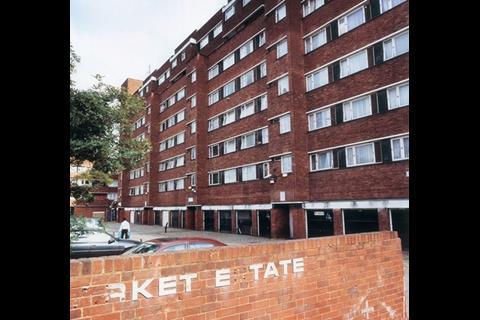
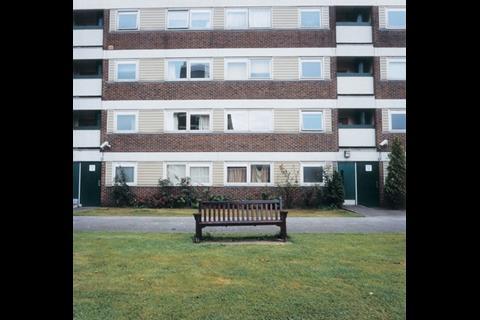
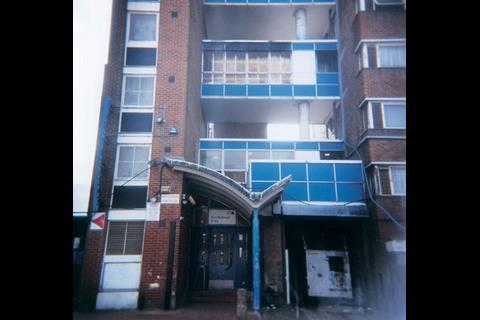
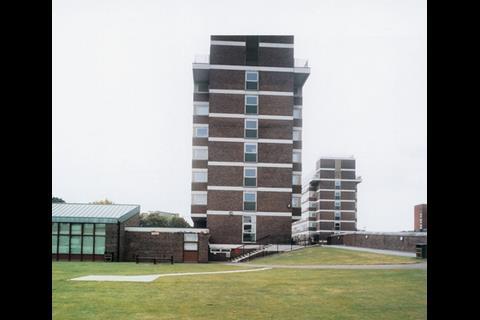
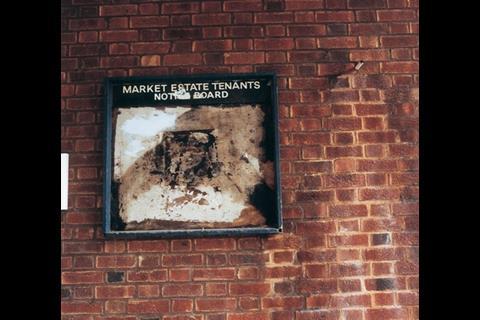


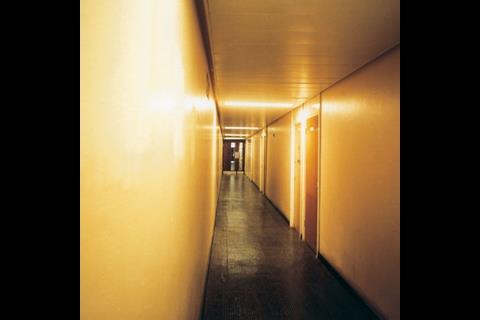
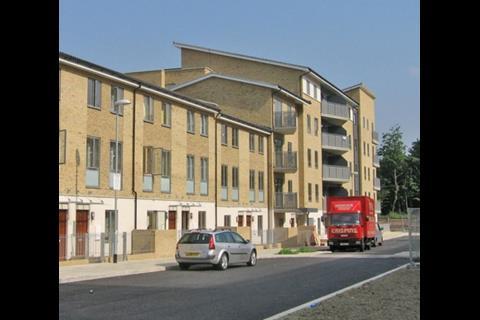






1 Readers' comment